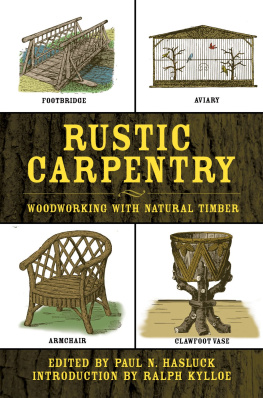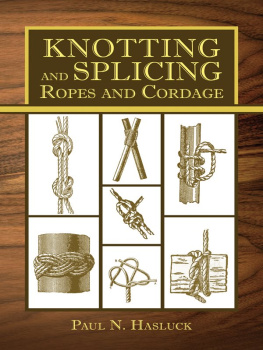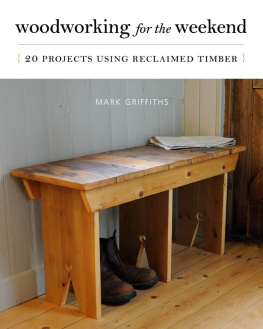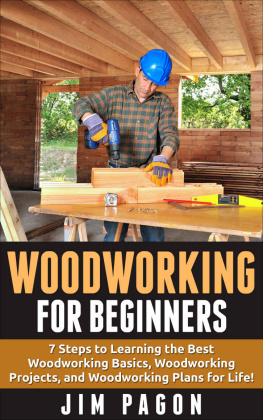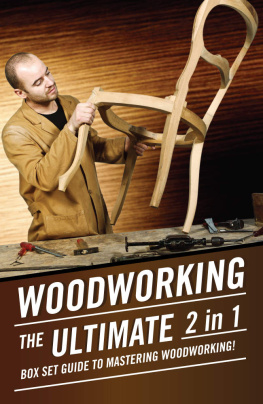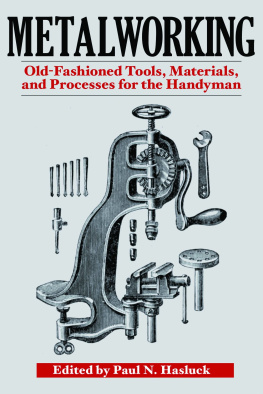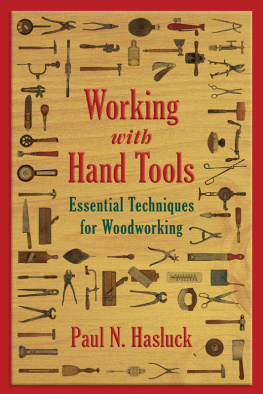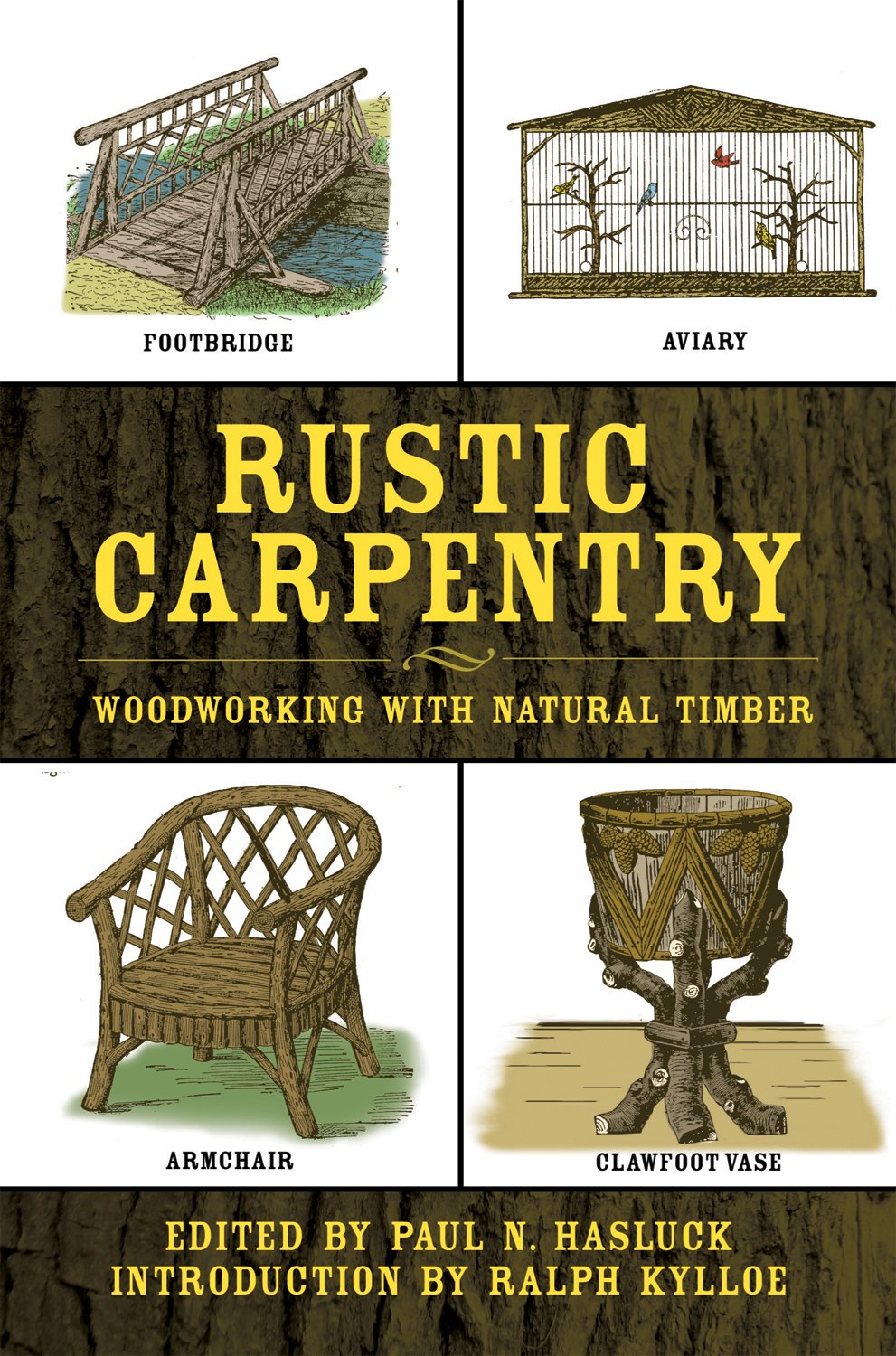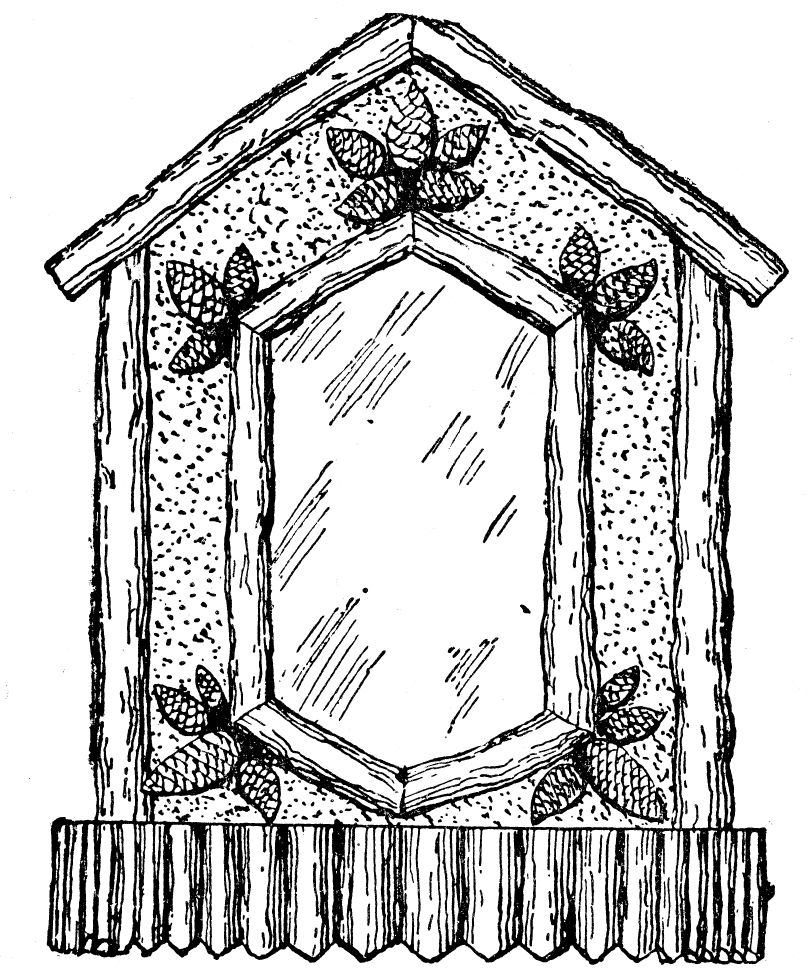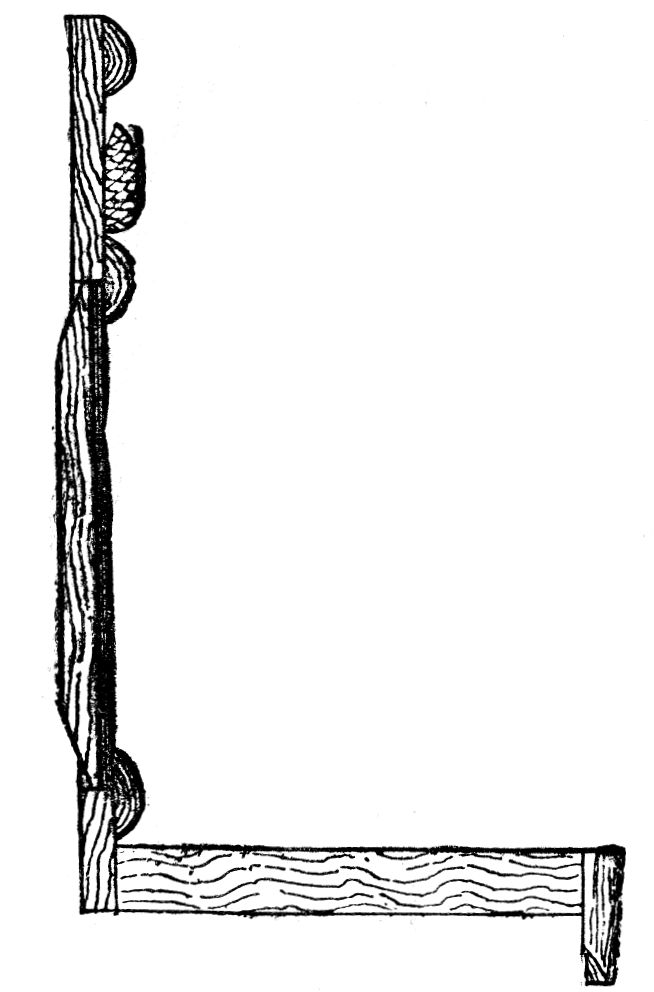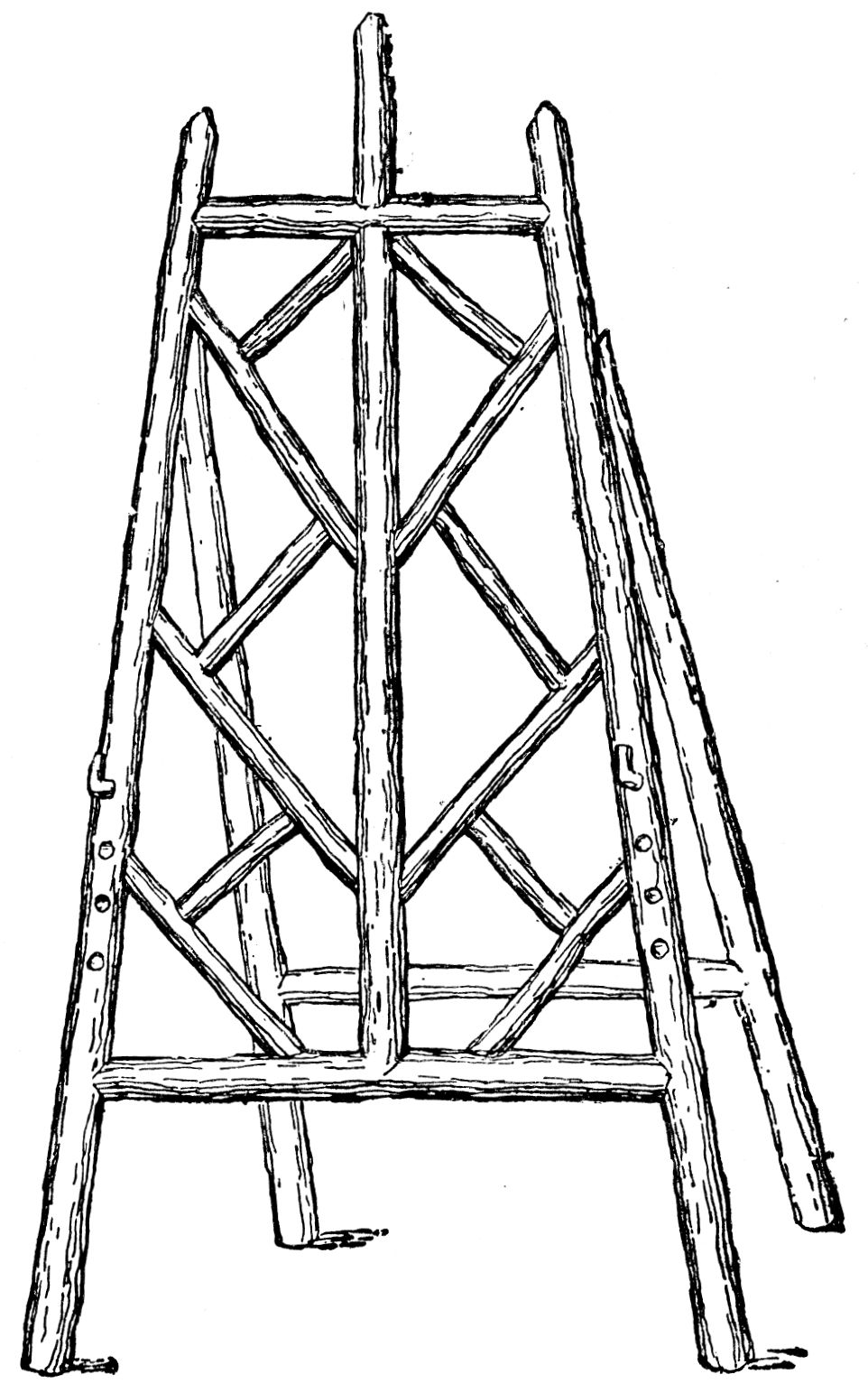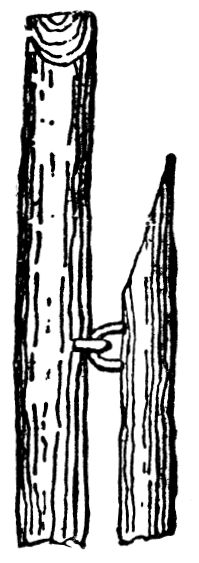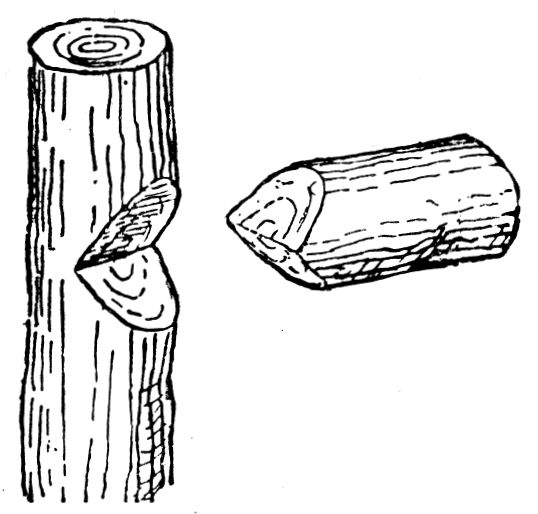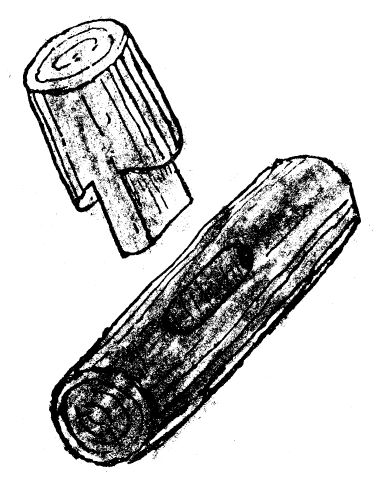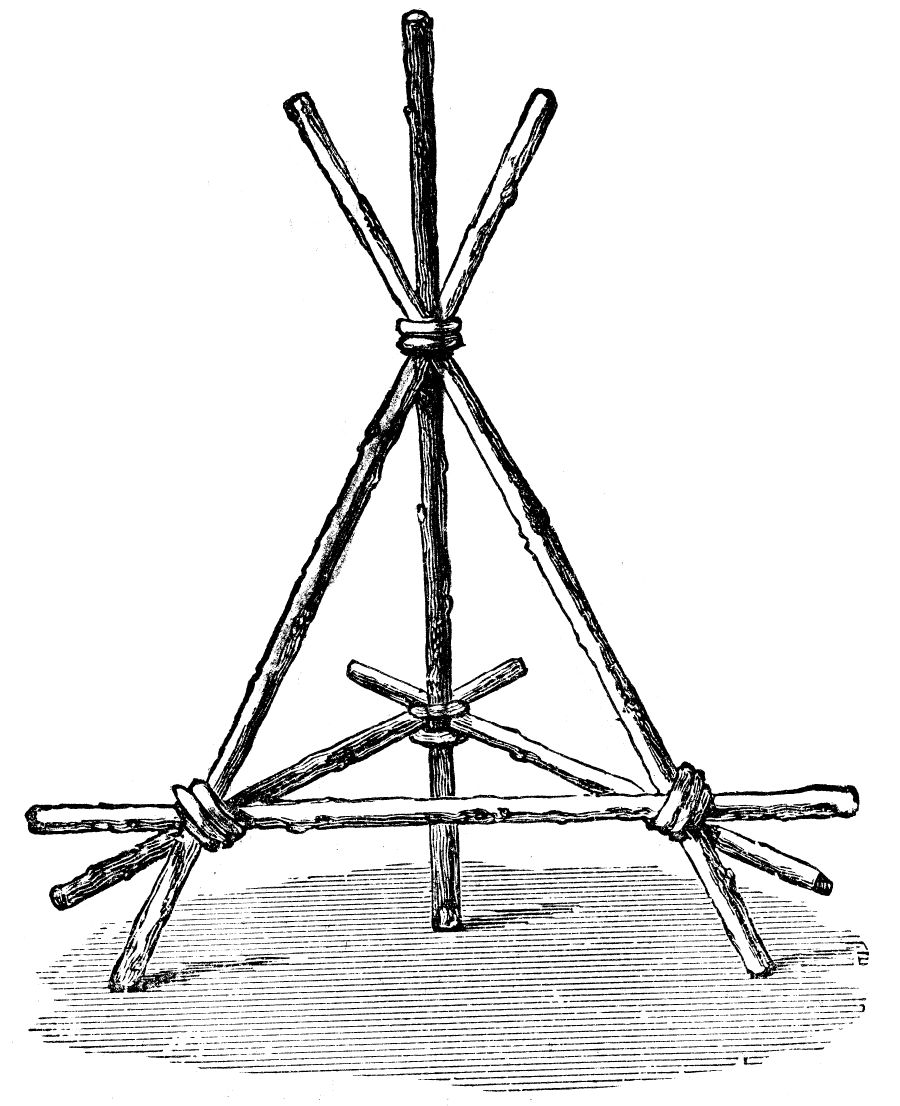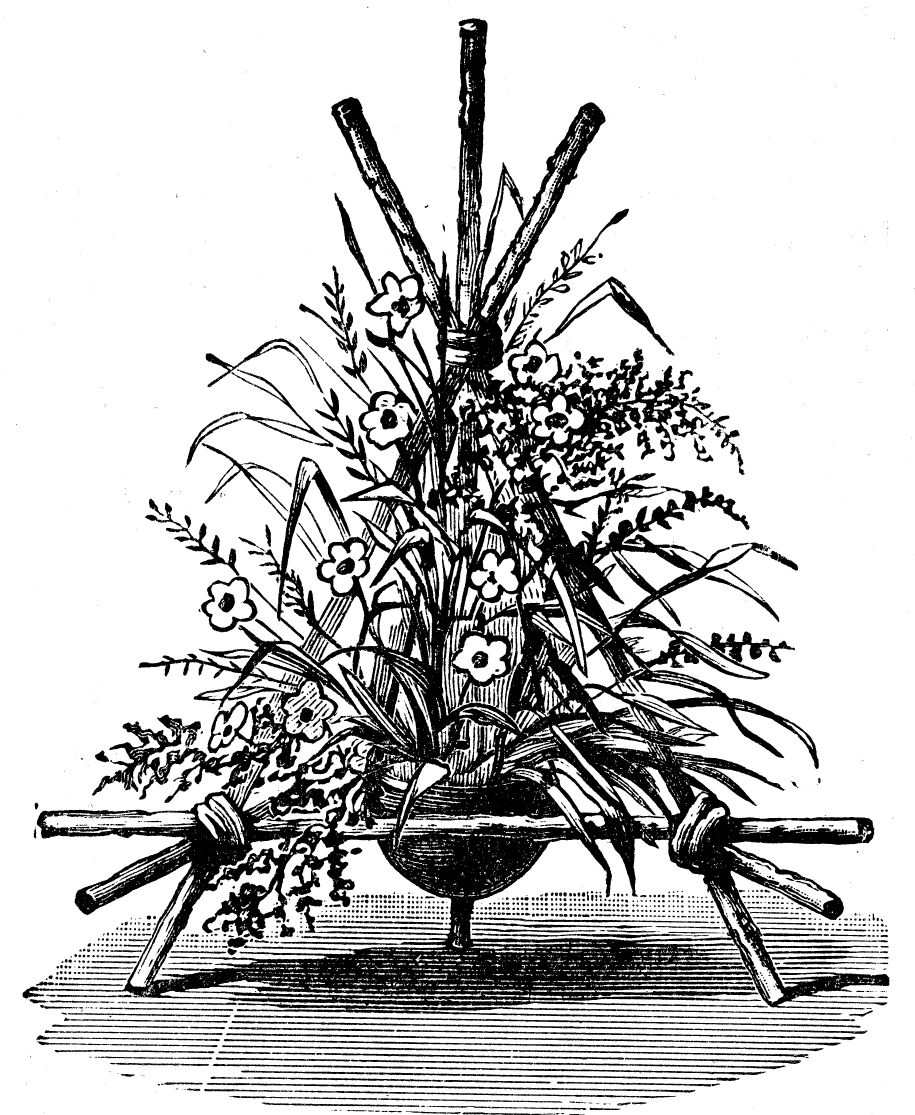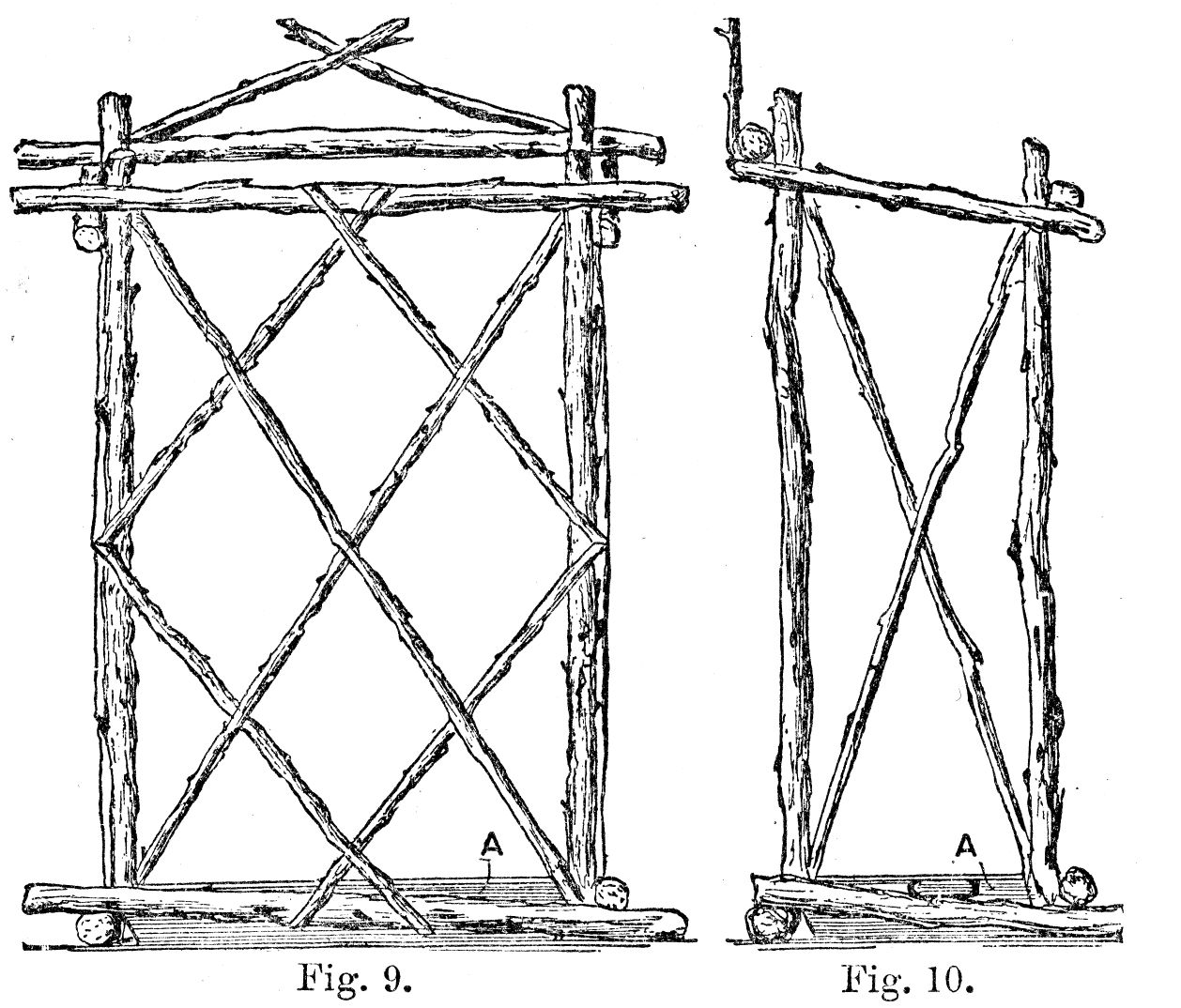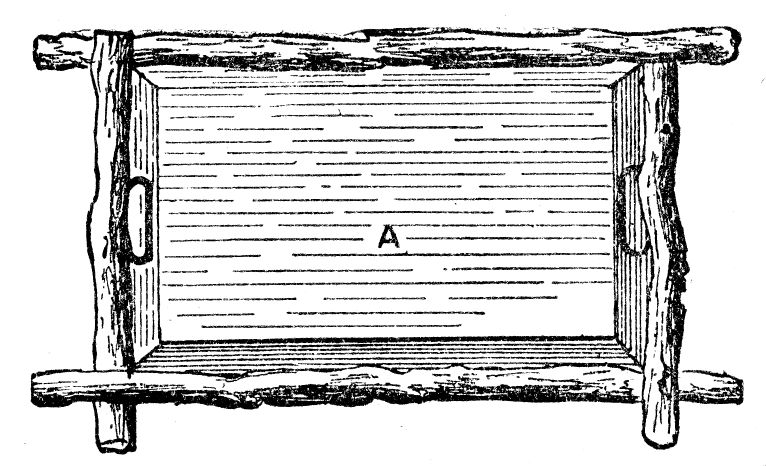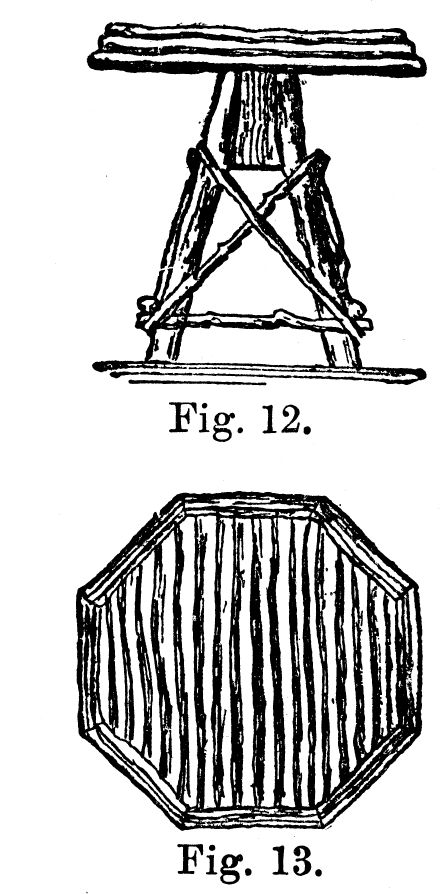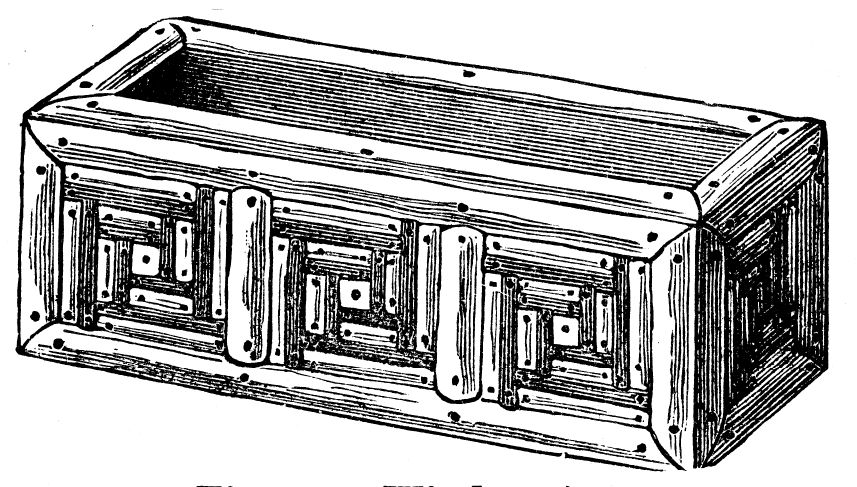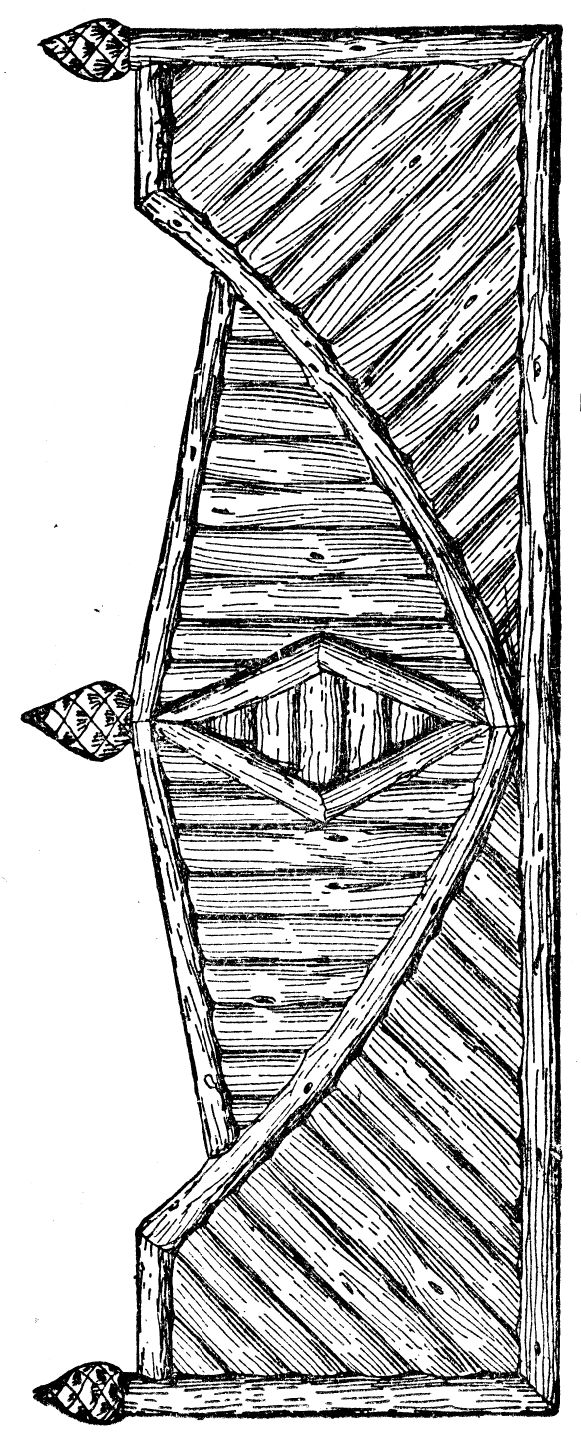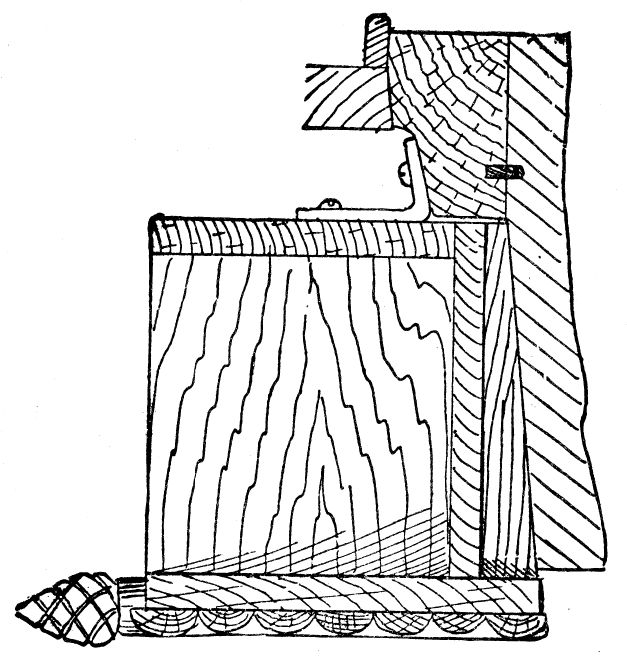CHAPTER I.
LIGHT RUSTIC WORK.
RUSTIC carpentry does not demand great skill in woodworking, but it does require a large amount of artistic perception. The tools needed are but few, and the materials employed are comparatively cheap, although in many districts they are becoming dearer every year.
It may be said that any articles made from the now popular bamboo may be made quite as effectively in light rustic work.
For light rustic work, sticks of hazel, cherry, yew, blackthorn, birch, larch, fir, and the prunings of many varieties of shrubs may be used; but it is necessary that the material should be cut at the proper season, and thoroughly dried before being worked up. The sticks should be cut in mid-winter, as at that time the sap is at rest; if cut in the summer time the bark will peel off. If peeled sticks are required, they should be cut in the spring, when the sap is rising, as at that time the rind will come off easily. In some districts the copses are cleared of undergrowth periodically, and the sticks (generally hazel) sold to hurdle and spar makers. A selection of these sticks would be very suitable for the purpose here described.
The sticks should be stacked in an open shed in an upright position if possible, and in such a manner that the air can freely circulate around them. When they are required for fishing rods or walking sticks they are hung up to seasonthis keeps them straighter; but the hanging of them up is not necessary for the work about to be dealt with. When the sticks have been put away for from six to twelve months, according tc size, they will be ready for use, after being rubbed with a cloth or brushed to clean off the dust and bring up the colour of the bark. Fir cones may often be worked into a design, and bits of rough bark and the warts and burrs found on old elm trees may be collected by the rustic worker and put by for future use.
.Photograph Frame and Wall Bracket Combined.
One method of treatment for designs in light rustic work is to split the sticks and use them to overlay the work with a Swiss pattern, as shown by , pp. 12 and 36).
.Section of Bracket, showing Fixing of Glass.
, which is a section through the centre.
.Small Easel in Rustic Work.
A small easel for photographs, or, if constructed larger, for a fire-screen, is shown by , may be used.
.Method of Attach. ing Support to Easel,
In making the easel (.
.Rustic Flower Holder for Table Decoration.
The finished articles may be either stained and varnished or left plain. Cherry sticks look well if the bark is left the natural colour, and the ends, where exposed, cleaned off and varnished without being stained. Some sticks improve in colour if rubbed over with a rag moistened with linseed oil.
.Rustic Flower Holder Complete, with Cocoanut Vase in Position.
If a stain is required, one that is sold in bottles would be suitable, but a little vandyke brown, ground in water, and applied with a sponge, answers the purpose. Sometimes, as in the case of the table top (see , p. 36), it is a good plan to stain the wood before nailing on the pattern work, or there will be danger, if the sticks are dark in colour, of the lighter wood showing through.
If the rustic work is intended to be placed out of doors, it should be given two or three coats of hard outside varnish.
The rustic flower-holder for table decoration, shown by is an attempt to show the tripod when decorated.
The rustic hall-stand shown by ).
.Front and Side Elevations of Rustic Hall Stand
.Plan of Rustic Hall Stand, showing Umbrella Pan.
.Elevation and Plan of Plant Stool.
The rustic stool (, the ends being allowed to cross each other and project about 1 in. all ways. The whole stool, when finished, stands 10 in. high, and is so strong that it will support a heavy man with safety. The block of wood to which the legs are attached should be stained to match the rustic wood; permanganate of potash solution will effect this. Finally, two coats of clear varnish give a good finish to the work.
Window boxes are illustrated by is made from a raisin box obtained from a grocer. Such boxes are not costly, and to buy and knock these up for rough uses is often more economical than buying new material. Take care that the boards are stout enough to hold the brads firmly. The box measures about 21 in. by 7 in. by 7 in., and is wholly covered with mosaic of dark and light strips in panels. Strips are also nailed on the upper edges.
.More Elaborate Window Box.
.Gross Section of Window Box in Position.
The more elaborate window box ( wedge pieces are shown fitted to the stone sill to bring the box level; it is kept in position by two metal angle-pieces screwed both to the wood sill and to the back of the box.
CHAPTER II.
FLOWER STANDS, VASES, ETC.

